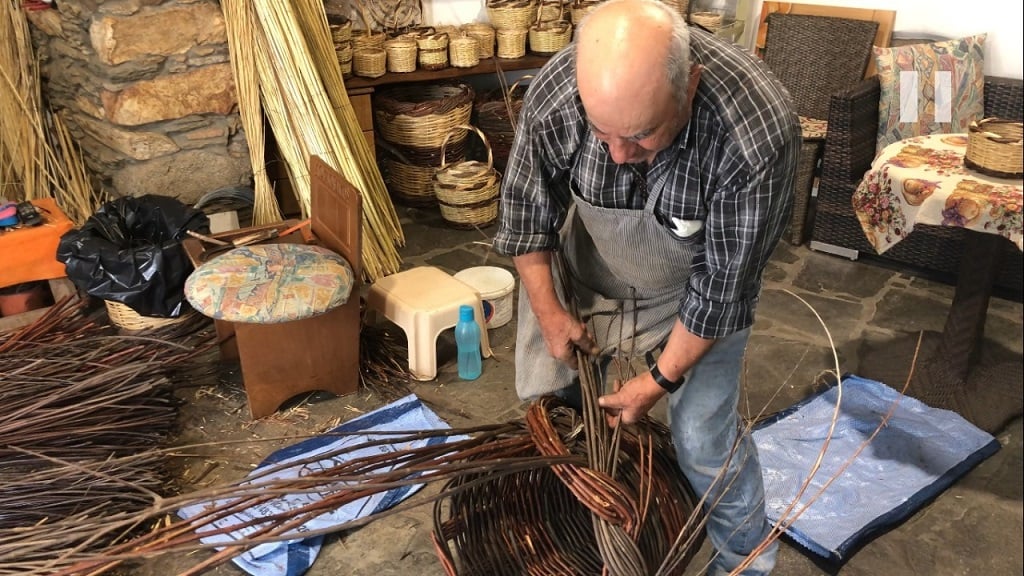
The traditional handicrafts and folk arts of Greece were initially born out of necessity. Yet, they are also objects of remarkable beauty. One of the oldest crafts from antiquity that is still appreciated today is basket weaving. Once used by beekeepers who wanted to make artificial hives for wild bees, the skill of basket weaving is now a dying art.
The supple yet tightly woven, scented willow baskets made of reed and osier that adorn tourist shops on most islands are a happy reminder that these skilled crafters are still in demand. Basket weavers are still around on the islands to repair taverna chairs and other cane furniture as well as sell their decorative and practical baskets to tourists during summers.
Retirees in Greece still love basket weaving
One such basket weaver is grandfather Kyrie Adonis from Volax on Tinos island. He has been crafting traditional coppiced baskets “since he was a twelve-year-old child,” he says.
Volax Village on Tinos is one of the most charming and picturesque villages in the Aegean with its classic Cycladic architecture and mysterious, smooth geographic rocks. His store has been visited by many sightseers over his more than sixty-year career.

How traditional baskets are made
While no tools are necessary, making a traditional basket is not as easy as it appears. First, you must collect the sticks from the withy tree (a strong flexible willow stem, typically used in thatching and gardening) around mid-July to mid-September and strip them of their outer layer. They are then placed in the sun to dry out and later immersed into cool water to give them elasticity. In January, the cane is usually ready to be collected, and the long slender shoots will then be twisted and bent around nimble fingers for the “over-one-under-one” work.
It takes twelve rods of osier tightly wound into circles to form a skeleton. The wicker weaver then places twelve canes on the ground open in a star formation and starts to knit through three rods until about thirty centimeters high. He or she then bends the osiers and puts them in a guide of the same diameter and continues knitting for another five centimeters. To give the basket color and texture, she or he weaves with split reeds for about twenty centimeters more. When this is done, a type of girdle is constructed to make the basket more durable, and then another twenty centimeter belt is weaved to finish.
Well-known traditional basket villages
While traditional baskets are available almost everywhere in Greece, specific villages where weaving is revered as a lost skill are in Drymalia and Keramoti in Naxos, the town of Anogia on Crete, and Methana in Argolida to name a few. Here, they make small baskets lined with olive leaves soaked in retsina to smoke fish on the BBQ.
There is also an excellent basket weaving museum in Komotini, The Basketry Museum of the Roma, specializing in peoples of various countries of the Balkan Peninsula (Greece, Turkey, Bulgaria, Albania, Serbia, and others) as well as the rest of the world.
A calathus (Greek: κάλαθος) is a basket in the form of a top hat for holding wool or fruit. It was often used in ancient Greek art as a symbol of abundance and fertility.
See all the latest news from Greece and the world at Greekreporter.com. Contact our newsroom to report an update or send your story, photos and videos. Follow GR on Google News and subscribe here to our daily email!



